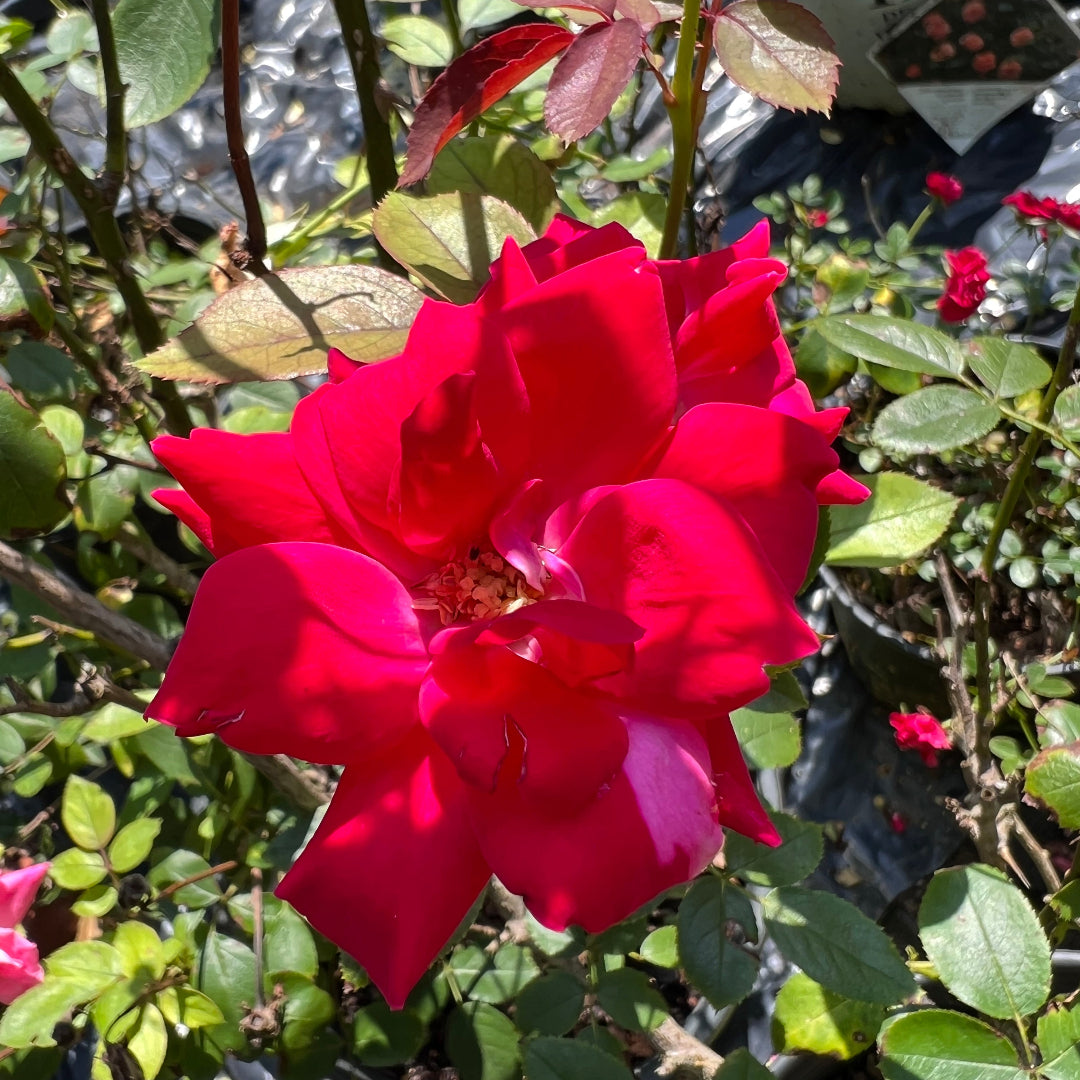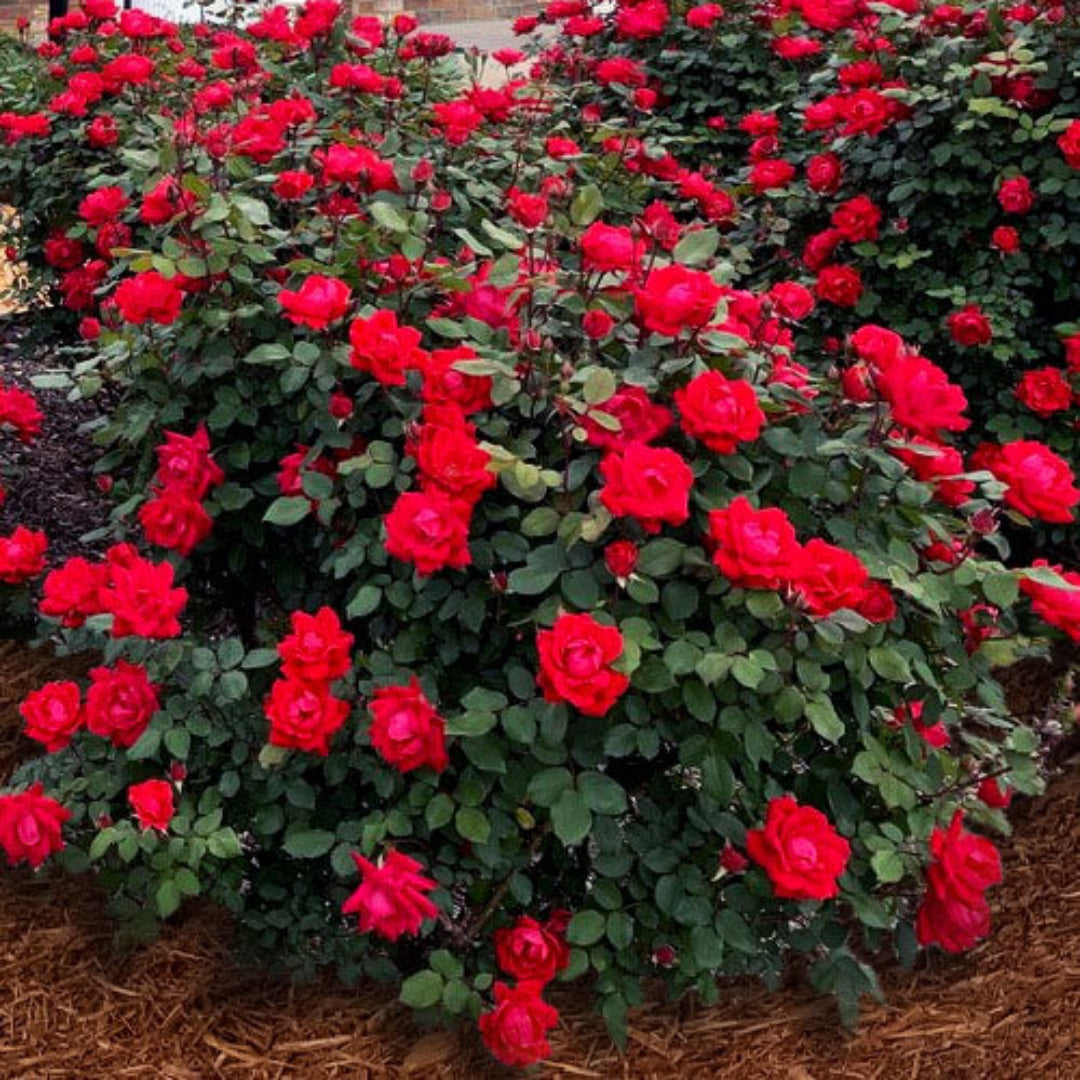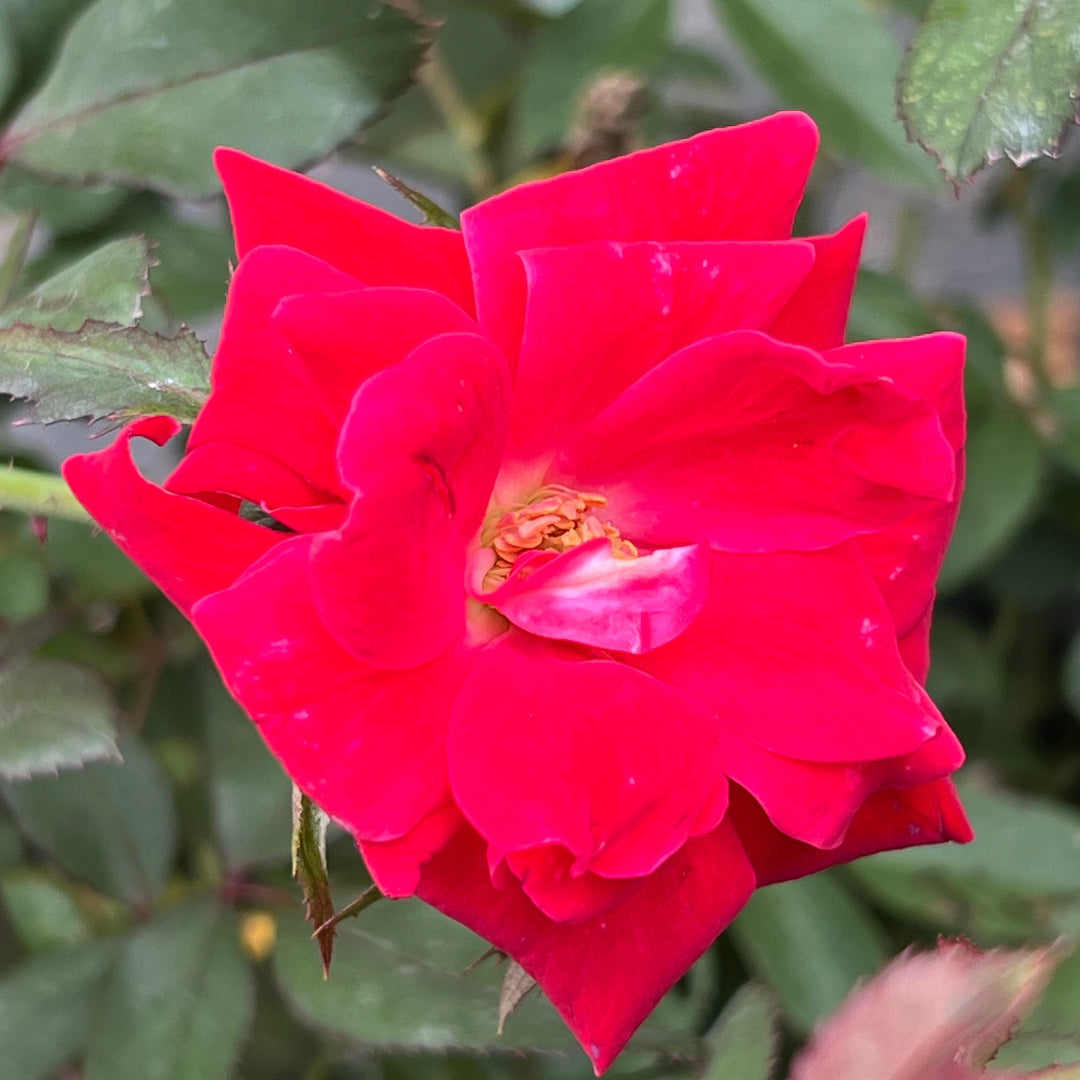









Product Details
Description
Zones

Plant Care Tips
Local search
Customer Service
Pixies Gardens
2024 Mcdaniel Mill Road Conyers GA 30094
Email: cs@pixiesgardens.com
Frequently Asked Questions
What is a Double Red Knock Out Rose?
Double Red Knock Out Rose is a low-maintenance, compact shrub that produces rich red, double-petaled flowers. It looks like a classic rose but grows without the usual maintenance, making it a favorite for modern landscapes.
How tall and wide does it grow?
This rose typically grows about 3 to 4 feet tall and wide, forming a round, bushy shape. It fits beautifully in borders, flower beds, or as a stand-alone accent plant.
Does it bloom all season?
Yes! One of the best things about the Double Red Knock-Out Rose is that it blooms continuously from spring through fall. You’ll enjoy the rich red flowers throughout the warm months with very little care.
How much sunlight does it need?
This rose loves the sun. Select a location that receives at least 6 hours of sunlight each day for best growth. More sun = more blooms.
Is the Double Red Knock Out Rose disease resistant?
Yes, it’s known for being very resistant to common rose diseases like black spot and mildew. That’s why it’s a great choice for beginners or low-maintenance gardens.
How do I care for it during the year?
Water the plant one to two times per week based on weather conditions. Lightly prune in late winter or early spring to shape it and eliminate any weak or dead branches. Feed with a rose fertilizer in spring and mid-summer for best growth.
Can I grow this rose in a container?
Yes, the Double Red Knockout Rose grows well in large pots. Use a well-drained soil mix and place the container in full sun. Water regularly, especially in the summer.
Does it need deadheading or special pruning?
No deadheading is required—it cleans itself naturally. Still, light trimming helps manage its size and shape while promoting fuller, bushier growth.
What zones is it best suited to?
This rose variety grows best in USDA Zones 5 to 10, where conditions suit its hardiness. It can tolerate a range of temperatures, making it ideal for many regions across the U.S.














